I watch in awe as four men, our entire crew, heave up the large diagonal wooden beam of the dhow boat.
The massive triangular sail flaps in the warm Mozambican wind and then tightens as the boat surges forward, tons of old mangrove wood and steel carving through the water. Wind and sail are our silent engine for the day.
Relaxing under the sway of the wooden mast, I can’t help but feel that a dhow must be one of the most romantic ways to travel—especially when your destination is a private island villa in the middle of the magical Quirimbas Archipelago.
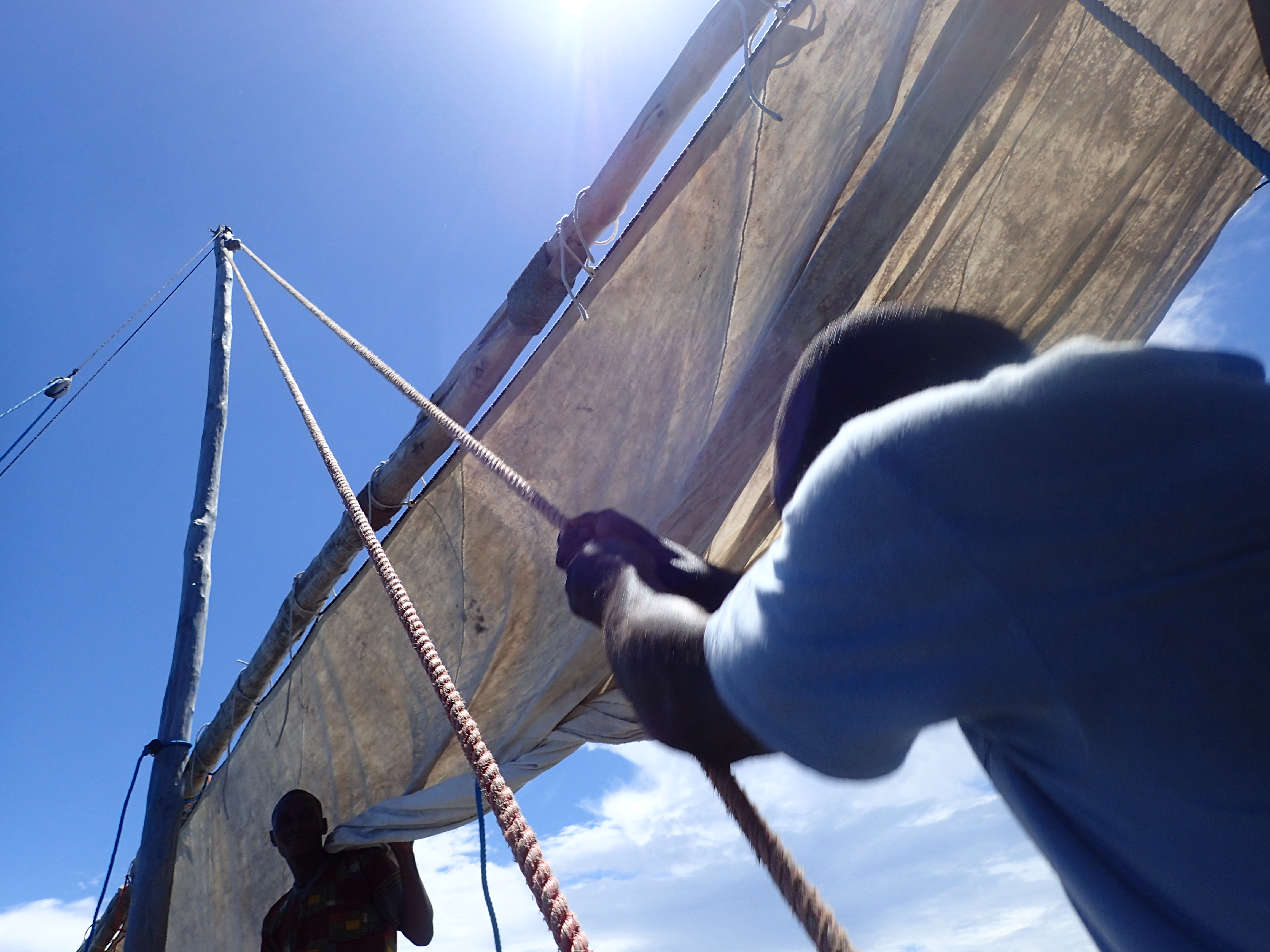
Dhows are woven into the tapestry of East African history and culture. They were originally sailed down from Arabia and India as early as 500 AD. Arab voyagers set up trade routes along the East Coast of Africa, spending months aboard their vessels, shipping hulls full of Ivory and spices back and forth. The boats became the transport of choice for a dynamic ocean trade, and carried ideas, technologies and religions between the continents as people explored the coast.
Today, our objective is a little more indulgent.
We are modern explorers of the tourist kind, en route to a beautiful private island in northern Mozambique known as Quilalea. This private patch of land has just 10 villas situated on the island, with its own house reef fringing the shore, and a number of deserted beaches that will make any romantic heart melt at the thought of it. I’ve experienced a mobile safari before, where a vehicle takes you from one lodge to the next on your safari, but this is something completely new.
“Dhow safaris are a wonderful way to see the Quirimbas,” said Cosmo, our guide on the dhow, and one of the best freedivers I’ve ever met. He explained how these types of safaris are perfect for honeymooners. Couples often spend over a week drifting through the islands from one lodge to the next.
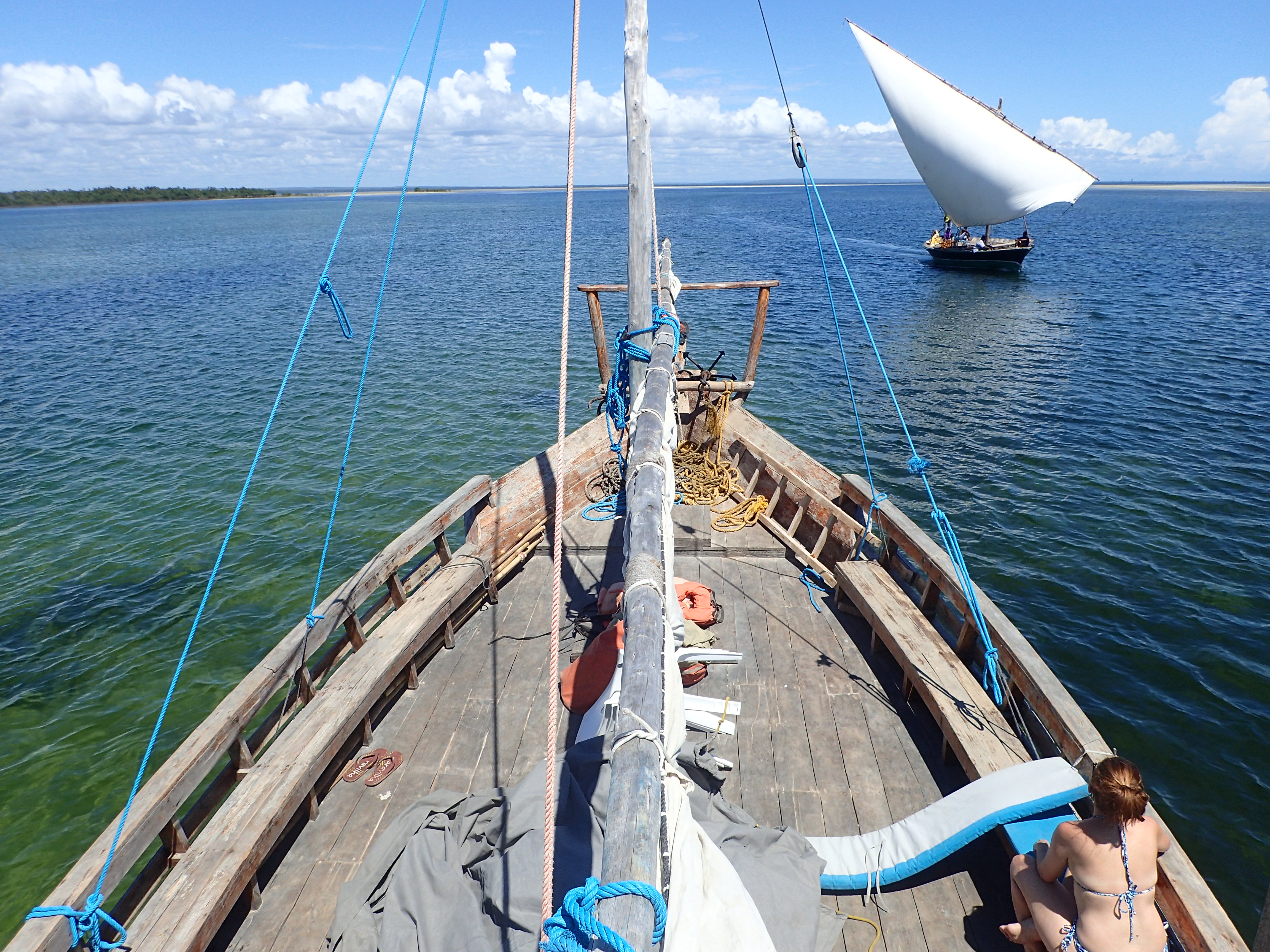
For the more adventurous types, he explained, mobile tented dhow safaris take you from one deserted and stunning island to the next. Camp sites are set up ahead of the boats, and all the food and equipment is brought along.
You arrive at each location with everything beautifully set up and taken care of, and all you have to do is relax and enjoy the company of your partner, laze on the beach, snorkel in the clear blue ocean, and sleep soundly in your tent.
“It isn’t 5 stars, he said. “It’s a billion stars!”
Today’s lunch is an exposed sand bank in the middle of the ocean.
Our captain sidles the boat up on the side of the tiny sand island, which is disappearing fast under the incoming tide—a little patch of white sand steadily being swallowed by the sea.
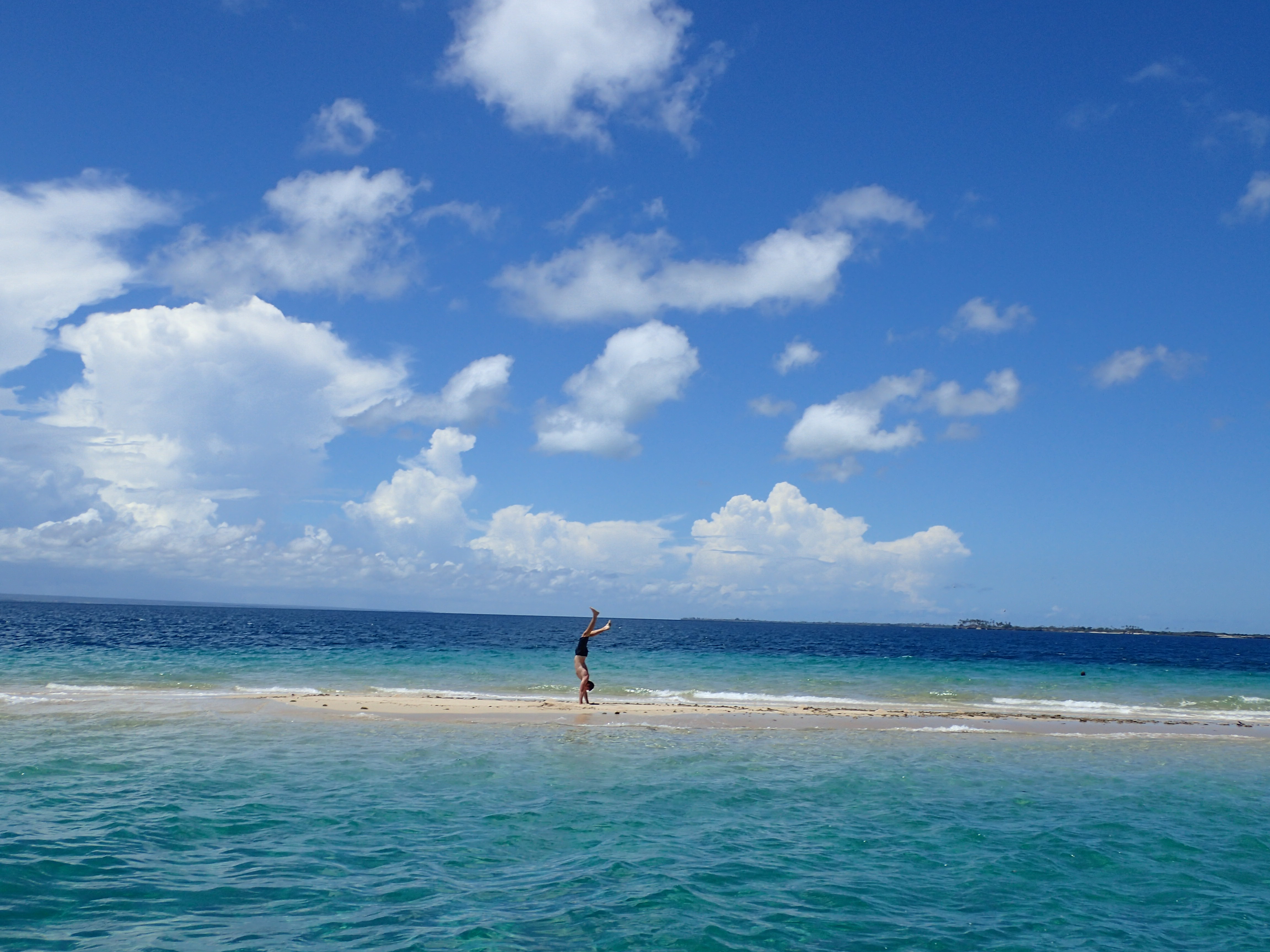
We anchor beside the island, and I jump ship, swim to the island, and proclaim this patch of land our own personal country with an area code and a president and an economy of cowry shells.
Incidentally, up until the late 19th century, cowry shells were used as a type of legal currency in Africa. The shells were collected in their millions and traded for more than 500 percent of their value in West Africa. The use of the cowry currency gradually spread inland in Africa. By about 1850 the German explorer Heinrich Barth found it fairly widespread in Kano, Kuka, Gando, and even Timbuktu.
Cosmo joins us in the water and we swim out beyond the island with masks and snorkel to see what we could find. Diving down to about 10 meters on the sandy sea floor, Cosmo and I find live cowries, massive conch shells, islands of coral, and colourful fish flitting through the clear azure water.
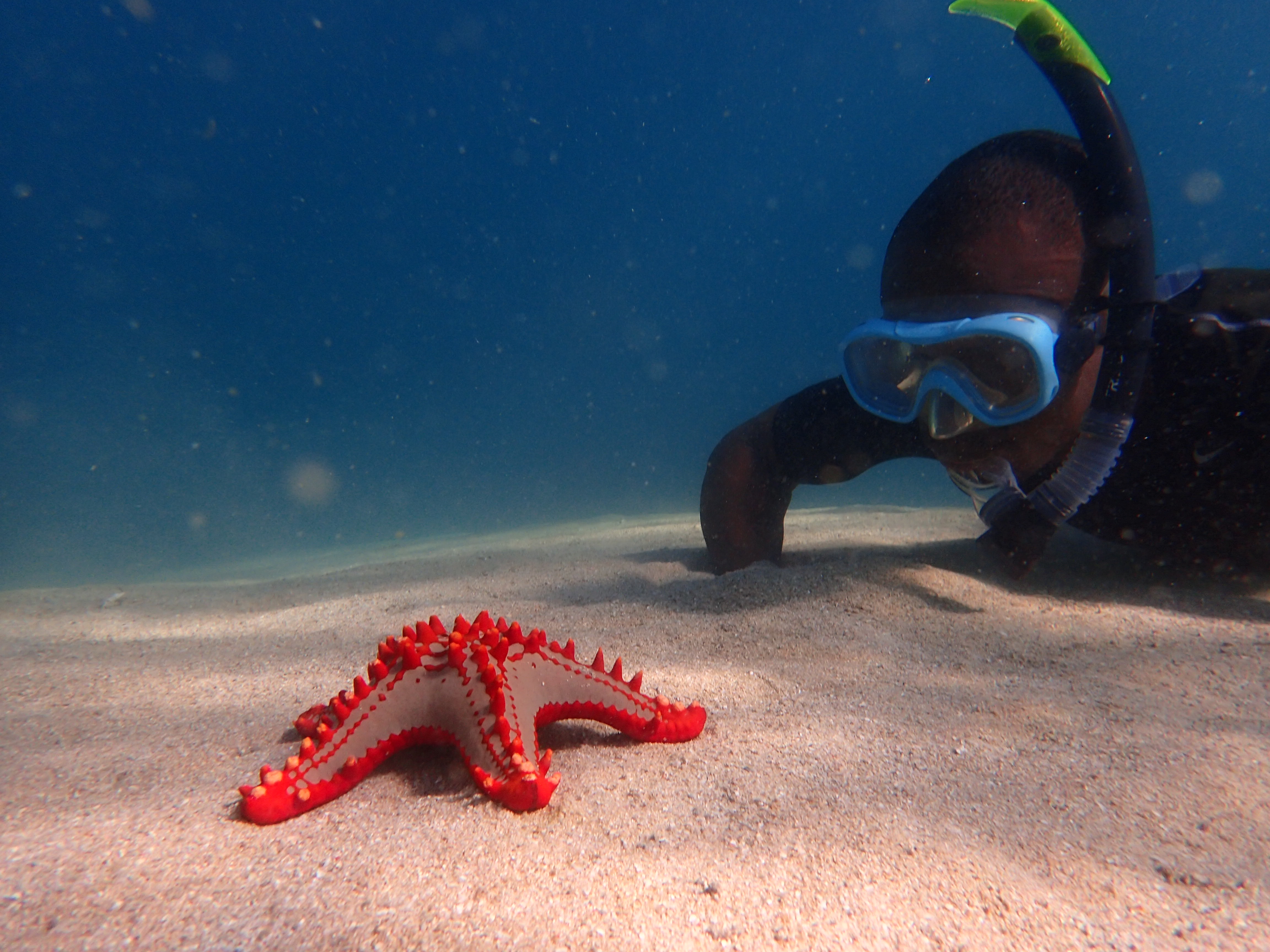
Salty and wet, we climb back onto the boat, where a cold beer and a plate full of salad and shrimp and mayonnaise sauce is waiting. We sit at the stern of the boat and gobble up this gourmet salad in the sea as our tiny island paradise is engulfed by the tide.
We set off again, through the magnificent blue, water lapping the wooden hull, and the flapping of the sails to keep us company. It’s a silent lullaby and induces immediate relaxation. The deep green wild mangrove islands pass by on either side of the dhow, and fishermen paddle across the open ocean in their tiny wooden canoes, waving at us, and gulls float in the wind and the shallow reefs pass underneath, and I take a deep breath of sea air and feel my tensions ease away.
“There’s the boat!” Shouts Cosmo.
In the distance, a white speed boat approaches, and as it gets closer, two men in light blue shirts appear at the front of the boat. On the side of the boat are the words Quilalea Private Island.
It seems our transfer to the island paradise has arrived.
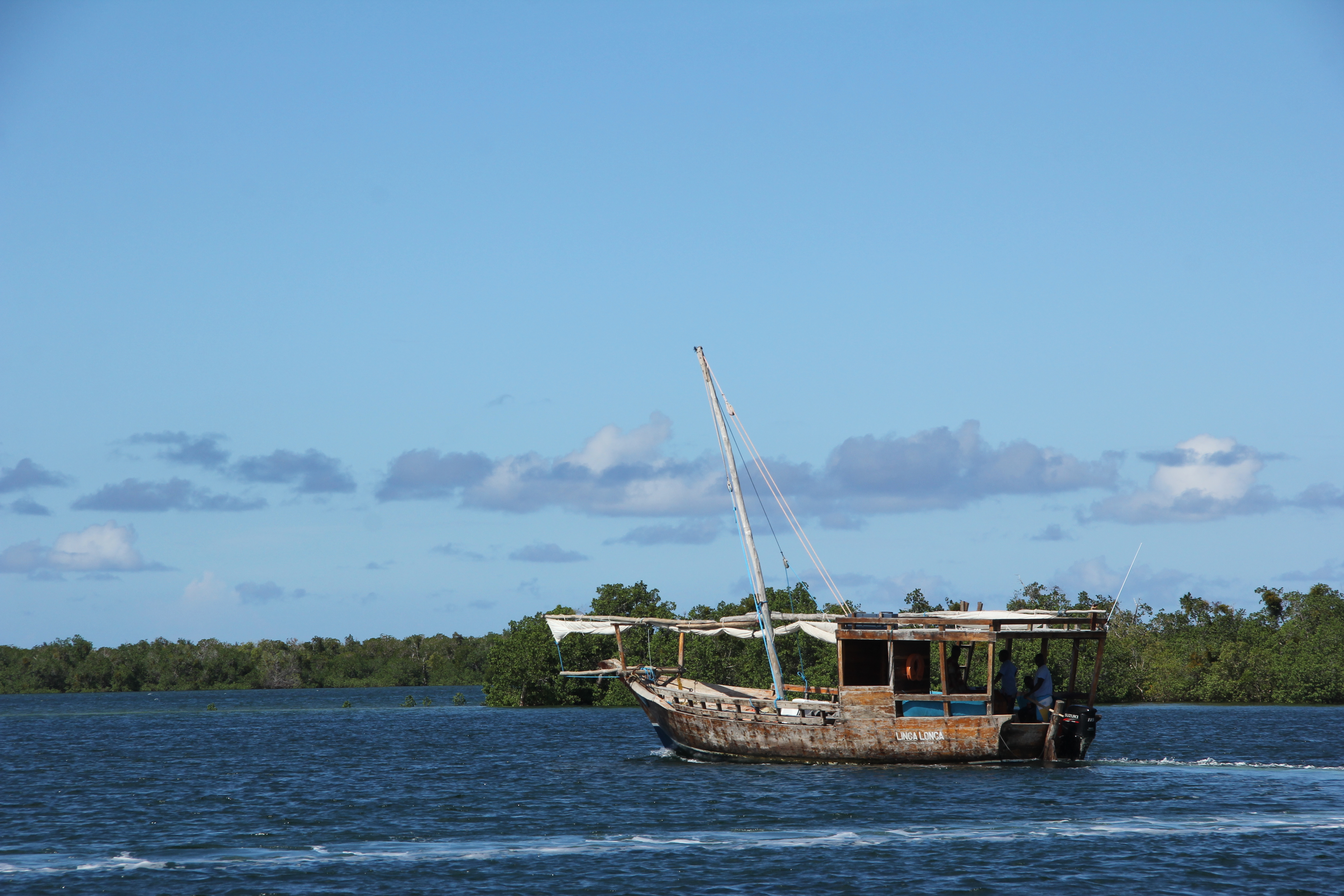
We jump on board, load our luggage, and wave goodbye to Cosmo and the rest of the dhow team.
The roar of the engine replaces lapping of the dhow in the waves, and as we speed off, I look back at the large heavy wooden boat drifting off against the mangrove green, a little wistful to see her go, but how can you be sad when you are on your way to a new island, and a new adventure.
Design your dhow safari now















